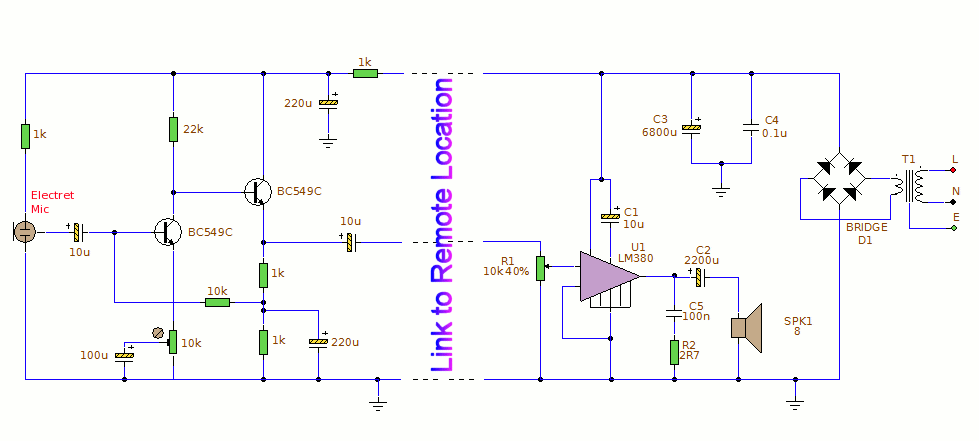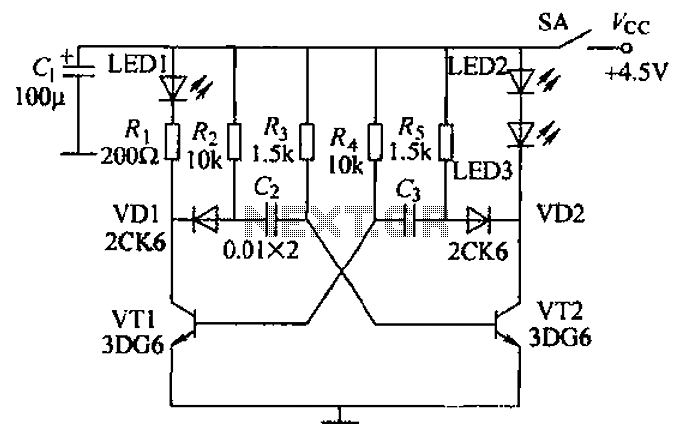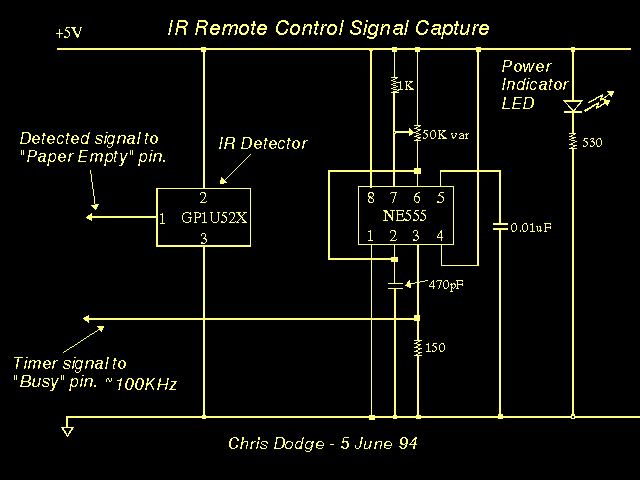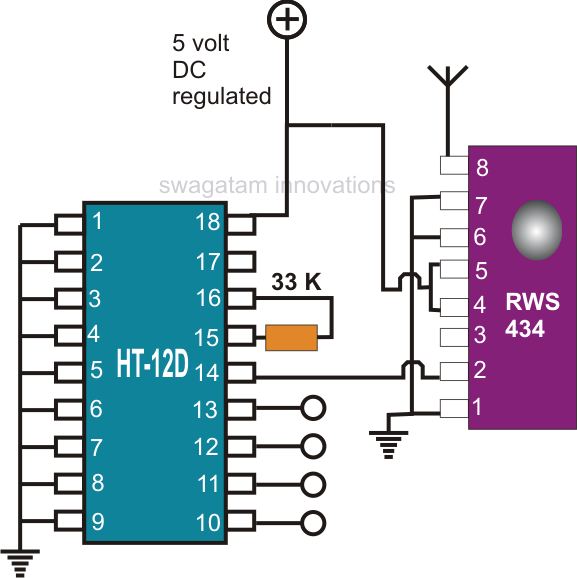
Infrared Remote Extender
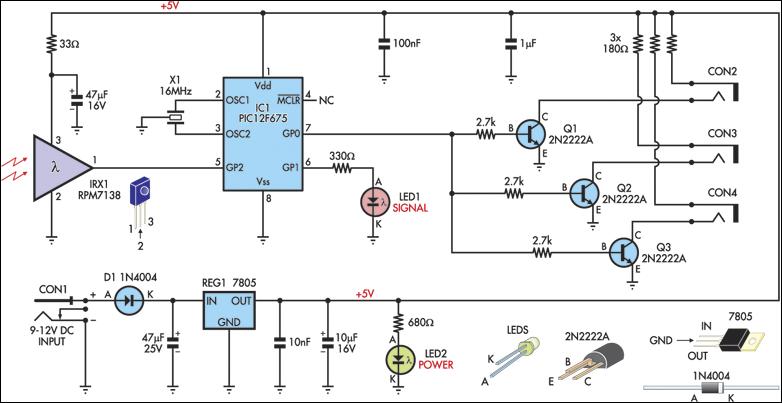
This project originated from the necessity to remotely control audio-visual equipment located inside cupboards. RF-based commercial units such as those used for...
The project aims to develop a system that enables the remote operation of audio-visual devices housed within enclosed spaces, such as cupboards or cabinets. The implementation of radio frequency (RF) technology provides a practical solution for controlling devices without the need for direct line-of-sight, which is often a limitation in traditional remote control systems.
The proposed circuit design consists of two main components: a transmitter and a receiver. The transmitter unit can be integrated into a handheld remote control or a wall-mounted panel, allowing users to send commands wirelessly. This unit includes a microcontroller that processes user inputs and modulates the RF signal for transmission. The modulation technique, such as amplitude shift keying (ASK) or frequency shift keying (FSK), is selected based on the desired range and power consumption.
The receiver unit, which is installed near the audio-visual equipment, is responsible for demodulating the incoming RF signals and translating them into control commands for the devices. It also incorporates a microcontroller that interprets the received signals and activates the appropriate output pins corresponding to the intended device operation, such as turning on/off, volume control, or input selection.
Power supply considerations are crucial for both units. The transmitter may utilize batteries for portability, while the receiver can be powered through an AC adapter to ensure a constant power supply. Additionally, the circuit should include necessary safety features, such as over-voltage protection and current limiting, to safeguard the components and connected devices.
To enhance the system's functionality, it may incorporate feedback mechanisms, such as LED indicators on the transmitter to confirm command transmission or a display module on the receiver to provide status updates. Furthermore, the RF communication range can be optimized by selecting an appropriate frequency band and using suitable antennas.
Overall, this project represents a significant advancement in the usability of audio-visual systems, allowing for greater convenience and flexibility in controlling devices that are not easily accessible.This project sprang from the need to be able to remotely control audio-visual equipment placed inside cupboards. RF-based commercial units such as those u.. 🔗 External reference
The project aims to develop a system that enables the remote operation of audio-visual devices housed within enclosed spaces, such as cupboards or cabinets. The implementation of radio frequency (RF) technology provides a practical solution for controlling devices without the need for direct line-of-sight, which is often a limitation in traditional remote control systems.
The proposed circuit design consists of two main components: a transmitter and a receiver. The transmitter unit can be integrated into a handheld remote control or a wall-mounted panel, allowing users to send commands wirelessly. This unit includes a microcontroller that processes user inputs and modulates the RF signal for transmission. The modulation technique, such as amplitude shift keying (ASK) or frequency shift keying (FSK), is selected based on the desired range and power consumption.
The receiver unit, which is installed near the audio-visual equipment, is responsible for demodulating the incoming RF signals and translating them into control commands for the devices. It also incorporates a microcontroller that interprets the received signals and activates the appropriate output pins corresponding to the intended device operation, such as turning on/off, volume control, or input selection.
Power supply considerations are crucial for both units. The transmitter may utilize batteries for portability, while the receiver can be powered through an AC adapter to ensure a constant power supply. Additionally, the circuit should include necessary safety features, such as over-voltage protection and current limiting, to safeguard the components and connected devices.
To enhance the system's functionality, it may incorporate feedback mechanisms, such as LED indicators on the transmitter to confirm command transmission or a display module on the receiver to provide status updates. Furthermore, the RF communication range can be optimized by selecting an appropriate frequency band and using suitable antennas.
Overall, this project represents a significant advancement in the usability of audio-visual systems, allowing for greater convenience and flexibility in controlling devices that are not easily accessible.This project sprang from the need to be able to remotely control audio-visual equipment placed inside cupboards. RF-based commercial units such as those u.. 🔗 External reference

